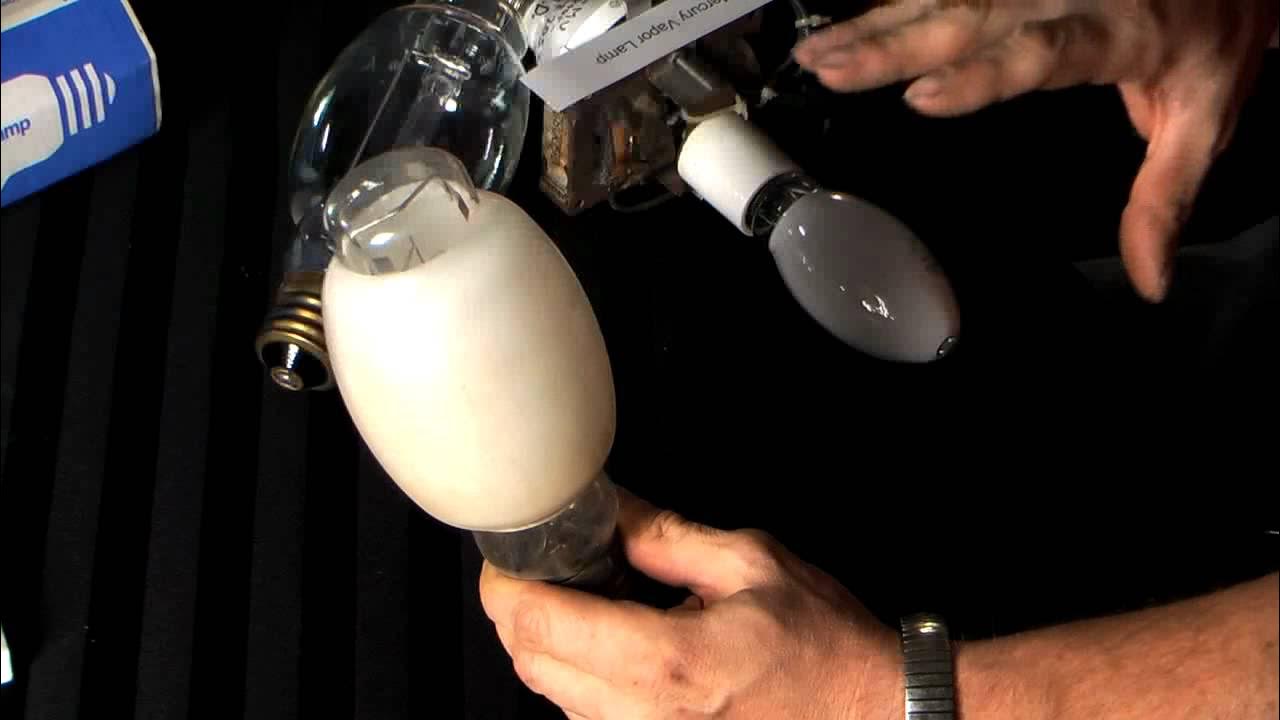The Metal Halide Lamp (MH)
Summary
TLDRThis script explores Metal Halide High Intensity Discharge (HID) lamps, a family of lights producing high-intensity light through gas discharge. It delves into the common 400 Watts Philips lamp, highlighting its quartz arc tube, high pressure, and mercury vapor and halide salts mixture for a crisp white light at 4000 Kelvin. The video explains the lamp's startup process, temperature maintenance for color stability, and compares its efficiency and lifespan with other HID types. It also touches on pulse start technology and showcases various applications and rare lamp models, emphasizing the lamp's versatility for indoor and outdoor lighting.
Takeaways
- 💡 Metal Halide HID Lamps are a type of high-intensity lighting that produces light through a gas discharge, unlike fluorescent lamps which rely on phosphors.
- 🔍 The HID family includes mercury vapor, metal halide, high-pressure sodium, and Xenon Metal Halide (XMH) lamps.
- 🔆 The Philips 400 Watts universal burning metal halide lamp (MH400/U) is a common type that can be used in any position due to its high-pressure quartz arc tube.
- 🌡 The lamp operates at about 50 PSI, which is high for an HID lamp, and this pressure contributes to its high light output.
- 🌈 The color temperature of metal halide lamps is around 4000 Kelvin, providing a cool white light similar to fluorescent lights.
- 🔧 Inside the lamp, there's an arc tube made of quartz with electrodes at both ends, including a starting electrode and resistor for initial ignition.
- 🔵 The initial light is dim and blue, produced by argon gas, which transitions to a brighter blue as mercury vaporizes.
- 🌟 The addition of halide salts to the mercury vapor creates the white light characteristic of metal halide lamps by combining various colors.
- 🔨 The ends of the arc tube are white ceramic to reflect heat and maintain the necessary temperature for the halide salts to stay vaporized.
- ⚡ The 400 watts metal halide lamp produces about 38000 lumens, making it more efficient than a mercury vapor lamp but less so than high-pressure sodium.
- 🕒 Metal halide lamps have a reasonably long life, with an average of around 20000 hours when burned horizontally, though this can vary.
- 🏙️ Common applications for these lamps include high bay lighting, parking lots, and under gas stations, offering clean and crisp light for both indoor and outdoor use.
- 🚗 Metal halide technology is also used in automotive headlights, with smaller, high-pressure arc tubes for compact and efficient lighting.
- 📡 A rare specimen from Venture Lighting International, made in the early 1990s, featured pulse start technology and a defusing shield for safety and a warm color light.
- 🛠 Despite being phased out for more efficient pulse start technology, metal halide lamps still hold a place for their reliability and clean light output.
Q & A
What is a Metal Halide HID Lamp?
-A Metal Halide HID (High Intensity Discharge) Lamp is a type of lighting that produces light by passing electric current through a gas at high intensity, without relying on phosphors like fluorescent lamps do.
What are the different types of HID lamps mentioned in the script?
-The script mentions mercury vapor, metal halide, high pressure sodium, and Xenon Metal Halide (XMH) as different types of HID lamps.
What is the model of the common metal halide lamp discussed in the script?
-The common metal halide lamp discussed is a Phillips 400 Watts universal burning metal halide lamp, model MH400/U.
Why is the arc tube made of quartz in the metal halide lamp?
-The arc tube is made of quartz because it can withstand the high pressure of about 50 PSI required for the lamp to produce high light output.
What is the predominant discharge in a metal halide lamp?
-The predominant discharge in a metal halide lamp is through mercury vapor, with halide salts added to produce the characteristic white light.
What is the color temperature of the metal halide lamp mentioned in the script?
-The color temperature of the metal halide lamp is around 4000 Kelvin, which is a cool white similar to that of fluorescent lights.
How does the metal halide lamp start initially?
-Initially, the lamp starts with an arc through argon gas, making the lamp very dim and glowing a blue color.
What happens as the metal halide lamp heats up?
-As the lamp heats up, mercury vaporizes first, shrinking and brightening the arc, which is still blue. Then, the halide salts vaporize, mixing with the mercury vapor to shift the lamp's color from blue to white.
Why are the ends of the arc tube white?
-The ends of the arc tube are white because they are covered with ceramic to reflect heat back into the lamp, maintaining the necessary temperature for the halide salts to stay vaporized and the lamp to maintain its color.
How efficient is a 400 watts metal halide lamp compared to a mercury vapor lamp?
-A 400 watts metal halide lamp is more efficient than a mercury vapor lamp, producing about 38000 lumens compared to the 20000 lumens of a mercury vapor lamp.
What is the average life of a metal halide lamp if used horizontally?
-The average life of a metal halide lamp used horizontally is about 10000 hours, as the arc and heat can cause the arc tube to melt over time.
What are some common applications for metal halide lamps?
-Metal halide lamps are commonly used for high day lighting, parking lot lighting, and under gas stations.
Why are older metal halide lamps being phased out?
-Older metal halide lamps are being phased out for pulse start technology, which is more efficient but potentially less reliable.
What is special about the 35-watt metal halide lamp mentioned in the script?
-The 35-watt metal halide lamp has a tiny arc tube and operates at a higher pressure, making it more efficient and compact, suitable for use in automobile headlights and portable spotlights.
Why is the rare metal halide lamp from Venture Lighting International considered a collector's item?
-The lamp is considered a collector's item because it was only made for a short period around 1991 or 1992 and is no longer produced.
What safety feature does the rare metal halide lamp have to prevent lamp explosion?
-The rare metal halide lamp has a shield around the arc tube that helps to defuse the light and acts as a protective barrier to prevent the entire bulb from being damaged in case of an arc tube explosion.
Why might the rare metal halide lamp be a good replacement for halogen or incandescent lights?
-The rare metal halide lamp has a warm color when lit, resembling halogen or incandescent lights, and is more efficient, making it a decent replacement option.
Outlines

This section is available to paid users only. Please upgrade to access this part.
Upgrade NowMindmap

This section is available to paid users only. Please upgrade to access this part.
Upgrade NowKeywords

This section is available to paid users only. Please upgrade to access this part.
Upgrade NowHighlights

This section is available to paid users only. Please upgrade to access this part.
Upgrade NowTranscripts

This section is available to paid users only. Please upgrade to access this part.
Upgrade Now5.0 / 5 (0 votes)





